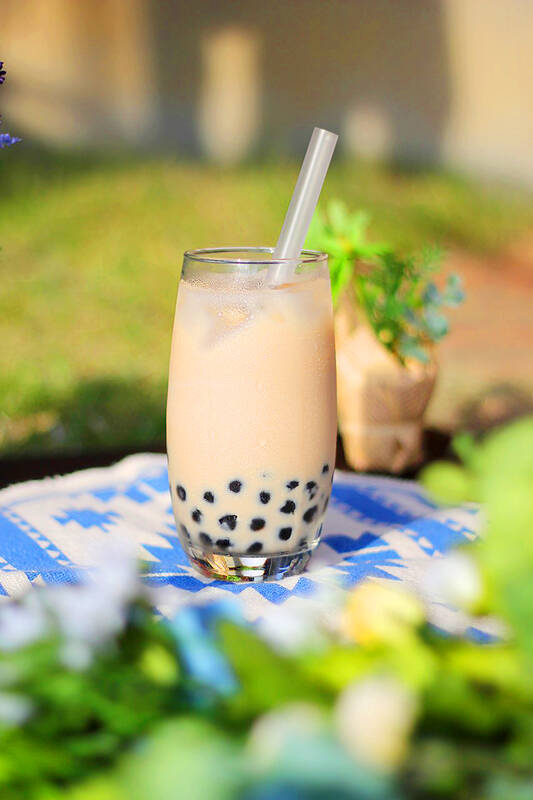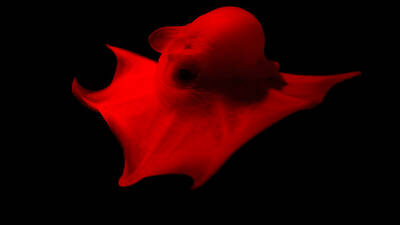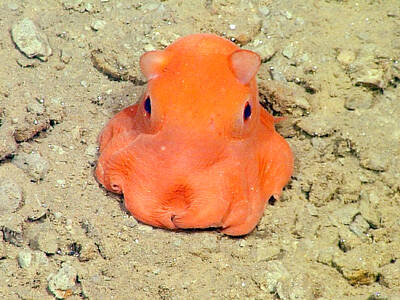Pearl milk tea is a national drink that has taken the world by storm. Although different stories are told about the origin of pearl milk tea, two of them stand out. The first comes from a tea house in Taichung named Chun Shui Tang. A staff member there named Lin Hsiu-hui was at a local market when she noticed tapioca balls (also known as “pearls”) for sale and thought to add them to her milk tea. She liked the taste, as did her colleagues with whom she shared her new drink. It started as a drink that was only shared with friends, but was so popular that it became a product – pearl milk tea.
珍珠奶茶是紅透全世界的國民飲品,其由來起源可說是眾說紛紜,最為人知的是兩間茶館之爭。台中的茶館春水堂,宣稱是店員林秀慧在菜市場採買時看到粉圓,靈機一動將粉圓煮熟後加在奶茶中,廣受同事間的好評。起初只是與好友分享的私房茶飲,後來因大受歡迎而成為商品。
national drink (n. phr.) 國民飲品

Photo: Pixabay l 圖片:Pixabay
tea house (n. phr.) 茶館
tapioca balls (n. phr.) 粉圓
The second origin story comes from another tea house in Tainan. The Hanlin Tea Room there claims that pearl milk tea was created by its owner Tu Tsong-ho, who saw a vendor selling white tapioca balls at the Yamuliao market. He came up with the idea of combining the tapioca balls with tea, leading to the first cup of bubble tea. The Hanlin Tea Room uses black and white tapioca balls (“pearls”) as its signature touch.
台南翰林茶館則說是由老闆涂宗和所創,涂老闆在逛鴨母寮市場時,看到有攤販販售白色粉圓,晶瑩剔透,想到到可以結合在茶飲中,於是第一杯珍珠奶茶就此誕生,翰林茶館也以黑、白雙色的珍珠為招牌。
vendor (n.) 攤販
Although the “pearls” in today’s pearl milk tea differ from those tapioca balls in the origin stories of the two tea houses, both are made from tapioca starch. The original tapioca balls are usually translucent on the outside and white inside, and often added as a topping to shaved ice. The tapioca balls used today are larger and black, like smooth round black pearls, giving bubble tea its well-deserved name.
雖然現今的珍珠奶茶的「珍珠」與粉圓外觀已有不同,但都是以木薯澱粉做成的。粉圓煮熟後有些透明,裡面為白色,時常加在剉冰中當作配料。相較於粉圓,現在珍珠奶茶中的「珍珠」更大更黑,有如一顆顆圓潤的黑珍珠,因此稱為珍珠奶茶,可說是名副其實。
Milk tea’s appeal today is already astonishing, and the addictive texture of the pearls makes the drinks irresistible to Taiwanese and foreigners alike. It is hard to imagine that this popular drink originated from tea houses that often have an impression of quiet and calm. Its popularity has led to the flourishing of Taiwan’s beverage industry, with an annual consumption of 1 billion cups. Nowadays pearl milk tea has become popular in Asia and has now expanded to other markets in Australia, Europe and the United States, with many brands competing for the market.
奶茶本身就已魅力驚人,再加上珍珠粉圓令人上癮的口感,不只台灣人喜愛,外國人也無法抵擋它的魅力。珍珠奶茶是如此受到歡迎,令人難以想像它原本是從靜謐的茶館中誕生。珍珠奶茶的風行使得台灣飲品業蓬勃發展,甚至達到年銷10 億杯的驚人數字。現在,這種飲料不但風靡亞洲,也進軍澳洲和歐美競爭飲料市場。
addictive (adj.) 上癮的
flourishing (adj.) 興旺的; 繁榮的
文章由書林出版公司提供:
www.bookman.com.tw

The deep waters off the coast of California are home to a bizarre creature: the flapjack octopus. This creature, known for its pancake-like appearance, spreads itself thin on the seabed as a clever survival strategy, making it difficult for predators to spot and capture it. With its unique, umbrella-shaped body formed by webbed arms, the flapjack octopus moves through the water in a graceful manner. It propels itself forward by rhythmically moving its body and contracting its webbed arms. Its pair of ear-like fins, which move independently yet with remarkable coordination, also help it explore the deep-sea environment. These

Bilingual Story is a fictionalized account. 雙語故事部分內容純屬虛構。 I stand by the Miluo River as dusk falls. The court betrayal is too much. I served Chu with loyalty. I forged alliances and fought corruption. But the whispers of jealous courtiers, the murmurs of treason, spoke louder. The king cast me out. The water looks calm. It promises peace. I step in. The river is cold against my legs. I hear shouts behind me — fishermen calling my name. I keep walking. The calls grow louder, but I do not turn around. The water rises to my chest. It pulls at me. I

In Taiwan, people can use a platform to rent a power washer for a weekend or share unused garage space for someone’s storage needs. These are examples of the sharing economy, a consumption model that has gained widespread adoption worldwide. This approach allows people to rent or share assets like cars, homes or even services, typically through online platforms. This innovative model poses a simple yet powerful question: why purchase infrequently used items when sharing is more practical? By making useful but idle resources accessible, the sharing economy turns them into sustainable opportunities. Internationally, platforms like Airbnb and Uber have popularized

Continued from yesterday(延續自昨日) https://www.taipeitimes.com/News/lang Many people may be familiar with flapjack octopuses thanks to Pearl, a charming character from the Pixar film Finding Nemo. However, her portrayal presents several scientific inaccuracies. In reality, flapjack octopuses are deep-sea creatures, which are unsuitable for the brightly lit shallow reef environment depicted in the film. Their primary defense mechanism relies on their reddish coloration, which would be ineffective in the well-lit shallows. Pearl’s famous line, “You guys made me ink,” is another fictional detail that is not consistent with the observed actions of real flapjack octopuses. As common as it is in many other octopus